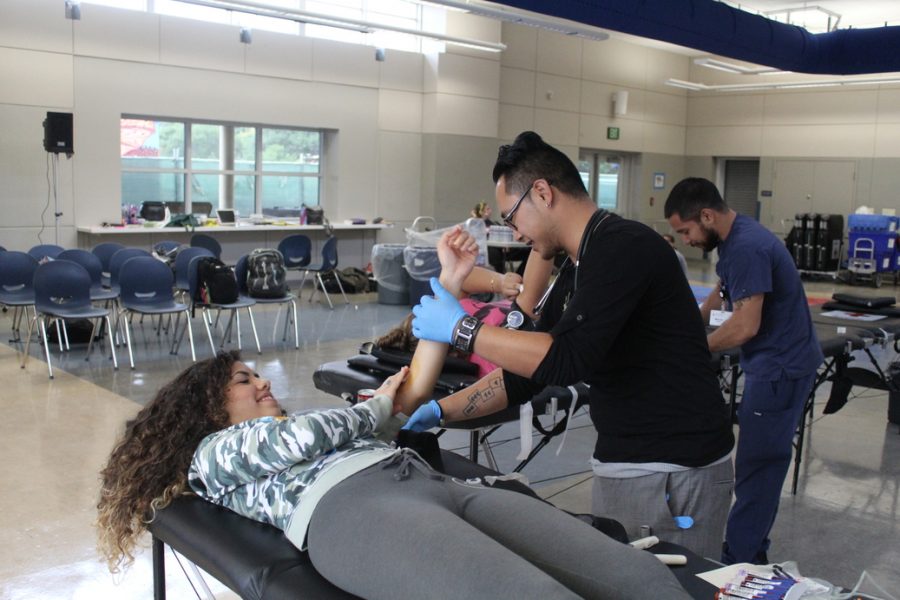Just one blood donation can save three lives.
On Oct. 27, The American Red Cross Blood Drive came to Carlmont High School and provided students with an opportunity to donate their blood.
“I just love the fact that by my giving up about an hour of my time and a pint of my blood, I can save someone’s life. I have plenty of healthy blood in my body, so why not share it with someone in need,” said junior Hazel Lam.
Before donating blood, students have to meet certain requirements in order to ensure that only safe and healthy blood is being donated.
Phlebotomist Catherine Valadez said, “We first have to identify that the donor is of age because the legal age minimum is 16. Then, we follow up with demographics about the donor and a mini-physical where we check their blood pressure, temperature, pulse, and hemoglobin level to make sure there is enough iron within the body. Finally, we check their health history with 54 questions regarding their health. If they pass that, then they’re cleared to go. All of this is just to ensure that only healthy blood is donated and that the actual donation won’t harm the donor.”
According to the American Red Cross, approximately 36,000 units of red blood cells are needed every day in the U.S.
“It’s sad because most people assume that everyone else donates blood so they don’t need too. But when everyone assumes that, no one donates, which leads to a lack of good blood that could be used to save a life. I always love it when I come to a high school and see so many kids willing to give back to those in need,” said Valadez.

Putting on the blood drive involved a lot of planning and organizing by ASB’s Do Something commission.
Service Council Vice President Matthew Irwin, a senior at Carlmont, said, “To prepare, we plan dates about a year in advance in order to make sure that the student union will be available and that the Red Cross will have us on their schedule. We then communicate with our contact at the Red Cross, Theresa Evangelista, to ensure that we have all the proper forms and information for students ahead of time.”
According to Irwin, the purpose of the blood drive is to get students involved in giving back and to realize the importance of service in a community. Most students don’t have easy access to a place where they can donate their blood, so this provides an easy opportunity for them to be a donor.
After her donation, Lam said, “Although I was kind of scared before I did it, it was definitely one of the best decisions I’ve ever made. It’s an amazing feeling knowing that your blood is going to possibly help give someone their life back.”


